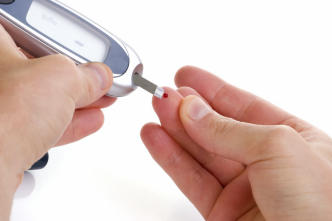Diabetes Care
7 Harmful Effects Of Type 2 Diabetes On Health
Type 2 diabetes is one of the silent killers because it progresses gradually over a period. Insulin is an important hormone in the pancreas that allows glucose (sugar) to leave the bloodstream and enter the cells to be utilized as fuel. Type 2 diabetes mellitus occurs when the pancreas doesn’t make enough insulin, or the cells of the body become resistant to insulin. It’s not known for certain why some people develop type 2 diabetes and some do not. Though, non-modifiable factors such as genetics, age and ethnicity do play a pivotal role in the development of type 2 diabetes, the modifiable risk factors such as lifestyle, habits and diet have enhanced the incidence of diabetes in the past few years.
Reasons for Type 2 Diabetes
There are mainly three types of diabetes- type 1, type 2 and gestational. There are several causes of diabetes. Here we have listed below a few common causes.
- The amount of glucose in the bloodstream is tightly managed by insulin and several other hormones. Insulin is released in small amounts by pancreas.
- When the amount of glucose in the blood rises to a certain level, pancreas will release more insulin to push more glucose into cells. This causes the glucose levels in the blood (blood glucose levels) to drop.
- In type 2 diabetes, cells of the liver, fat, and the muscles usually fail to respond to the presence of insulin.
- This means that even in the presence of insulin, glucose doesn’t enter inside cells; that results in an enhanced blood sugar level. In simple terms, cells display insulin resistance causing an enhanced level of sugar, also called hyperglycemia.
Health Problems Caused by Type 2 Diabetes
Excessive thirst, unusual weight loss, increased urination, tiredness or fatigue, blurred vision, nausea, vomiting, vaginal yeast infection, skin infection and sexual dysfunction are the common symptoms of diabetes in women. Though long-term complications of diabetes develop slowly, they can eventually be disabling or even life-threatening. Some of the potential complications of type 2 diabetes include:
Heart and Blood Vessel Disease
Diabetes dramatically enhances the risk of several cardiovascular problems, including coronary heart disease, chest pain (angina), heart failure or heart attack, narrowing of arteries (atherosclerosis), stroke, and diabetic cardiomyopathy. In coronary heart disease, a waxy substance called plaque builds up inside coronary arteries.
Arteries supply the heart muscle with oxygen-rich blood. When plaque builds up in the arteries, the condition is called atherosclerosis. Plaque narrows the coronary arteries and decreases the blood flow to the heart muscle. The build up of plaque also makes it more likely that blood clots will form in the arteries of the heart. Blood clots can completely or partially block the blood flow.
Coronary heart disease can lead to chest pain or discomfort called angina, irregular heartbeats called arrhythmias, a heart attack, or even death. Diabetic cardiomyopathy is a disease that damages function and structure of the heart. This disease can lead to arrhythmias and heart failure, even in men and women who have diabetes but do not have coronary heart disease.
Nerve Damage (neuropathy)
Excess sugar can injure walls of the tiny blood vessels (capillaries) that nourish the nerves, specifically in the legs. This can cause numbness, tingling, pain or burning that primarily commences at the tips of the toes or the fingers and slowly spreads upward. Poorly controlled blood sugar can eventually cause one to lose all sense of feelings in affected limbs.
Damage to the nerves that mainly control digestion can cause problems with vomiting, nausea, constipation or diarrhea. For men, erectile dysfunction can be an issue.
Kidney Damage (nephropathy)
Diabetic kidney disease (nephropathy) is a complication that occurs in many people with diabetes. In this condition the filters of kidneys, the glomeruli, become severely damaged. Because of this, kidneys ‘leak’ abnormal amounts of protein from blood into the urine. The main protein that gradually leaks out from the damaged kidneys is called albumin.
In healthy normal kidneys only a small amount of albumin is found in the urine. The higher level of albumin in the urine is the first sign that kidneys have become damaged by diabetes.
Eye Damage
Diabetes can severely damage blood vessels of the retina (diabetic retinopathy), potentially leading to the blindness. Diabetes also enhances the risk of several other serious vision conditions, like cataracts and glaucoma.
Foot Damage
Diabetes can mean double trouble for feet. First, diabetes can decrease blood flow to the feet, depriving feet of oxygen and nutrients. This makes it more difficult for the blisters, sores and cuts to heal. Secondly, diabetic nerve damage called peripheral neuropathy may cause numbness in feet. When one can not feel blisters and cuts, one is more likely to get infections and sores.
There are mainly 6 types of diabetic foot care complications such as neuropathy, skin changes, foot ulcers, calluses, poor circulation, and amputation.
Hearing Impairment
Hearing loss and diabetes are two of India’s most widespread health concerns. It has been found that hearing loss is twice as common in men and women with diabetes as it is in those who do not have diabetes.
The high blood glucose levels associated with diabetes cause damage to small blood vessels in the inner ear, similar to the way in which this disease can damage the kidneys and eyes.
Skin Problems
Diabetes can affect every portion of the human body, including the skin. In fact, such problems are many times the first sign that a person has diabetes. Fortunately, most skin conditions can be prevented or easily treated if caught early. Some of these complications are skin conditions anyone can have, but men and women with diabetes get more easily. These include fungal infections, bacterial infections, and itching. Other skin problems happen mostly or only to men and women with diabetes. These include necrobiosis lipoidica diabeticorum, diabetic dermo pathy, eruptive xanthomatosis and diabetic blisters.
Though there is no known cure for diabetes, but its harmful effects can be controlled through healthy diet and exercise.












Dear P K Malaviya
If your talk about fig as a fruit and sugar are in well control a person can have 1-2 fig fruit in 3 days once.A BIG NO for dried figs.
can type 2 Diabetes person can take fig